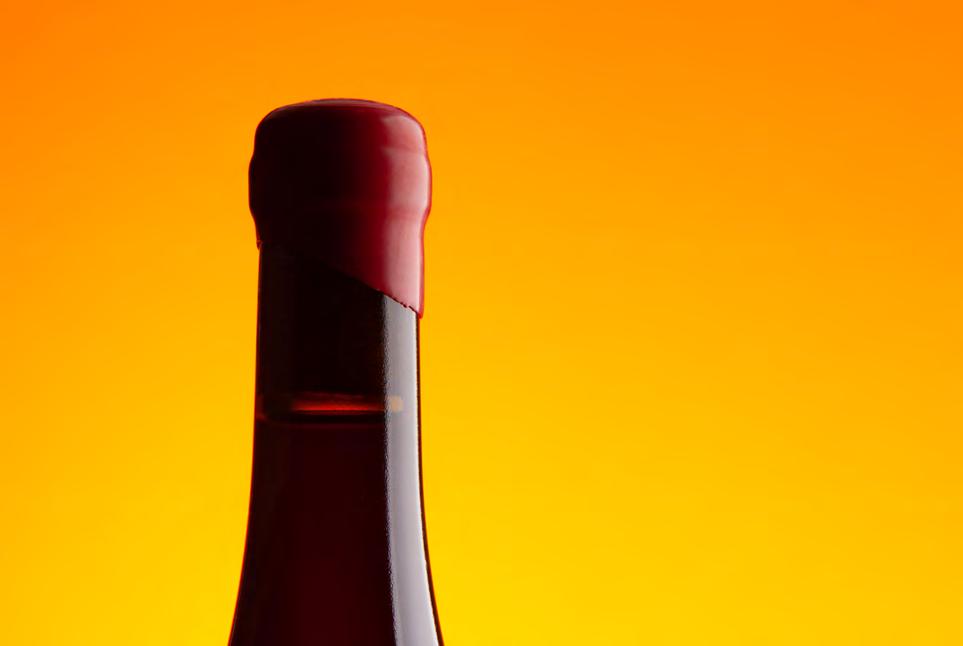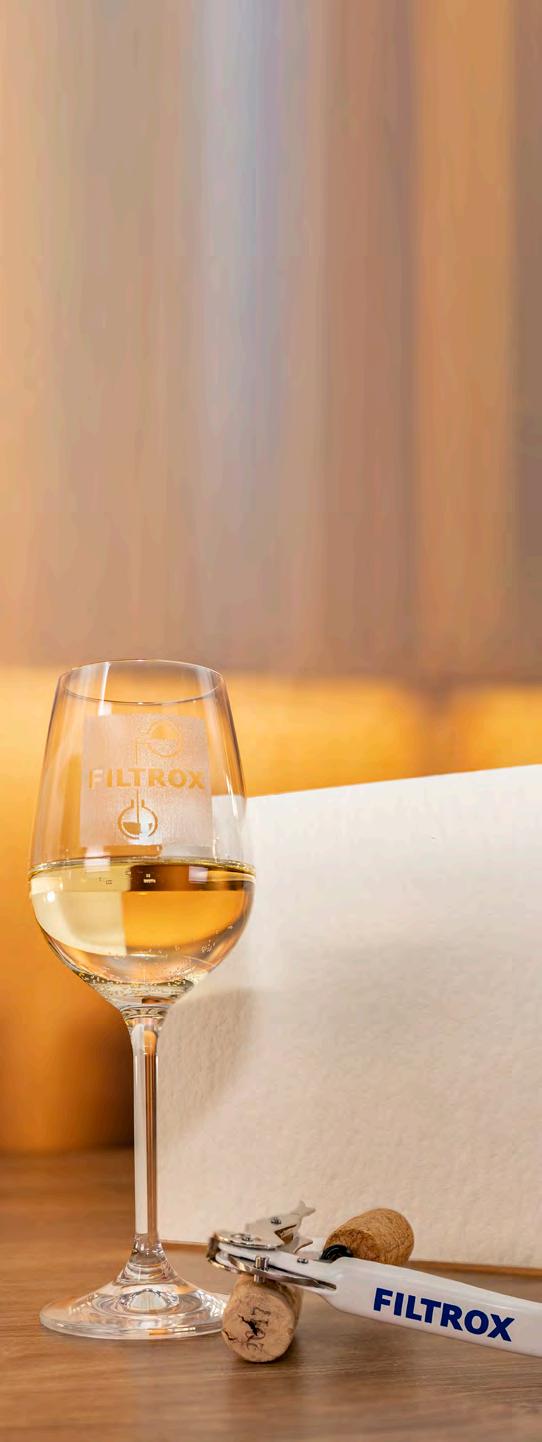
5 minute read
L’ASCESA ITALIANA NEI VINI ALL’ASTA
FRANCIA AL TOP, MA I FINE
Wines Made In Italy Crescono A Ritmi
Advertisement
I vini italiani stanno crescendo sempre di più nelle ricerche degli esperti di aste di vino. La Francia resta inarrivabile ma nell’ultimo anno l’appeal delle nostre etichette più prestigiose è in ascesa, tant’è che subito dietro i transalpini ci siamo sempre più frequentemente noi. Le regioni del Belpaese più battute, secondo il Barometro Idealwine 2022, sono il Piemonte e la Toscana. Tra i marchi top troviamo il Tenuta San Guido (con il Sassicaia ai vertici per distacco dei fine wines italiani), Gaja, Bartolo Mascarello, Giacomo Conterno, Ornellaia, Bruno Giacosa, Antinori ed altri ancora. Il prezzo medio di una bottiglia italiana all’asta è di 105 euro (+16%) con una crescita nel valore di oltre il 50%. Del tema ne abbiamo parlato con Gianluca Moncalvi che a maggio ha collaborato alla prima asta del vino dell’italiana Casa d’Aste International Art Sale di Milano.
@ Perché la scelta di ampliare la vostra gamma di aste al settore del vino?
Quali aspetti e numeri vi hanno attratto in questa direzione?
“Il comparto è in crescita costante. Abbiano quindi pensato di inserirci anche noi, forti dell’esperienza decennale nell’incanto di preziosi e oggetti d’arte, anche constatando che una parte della nostra clientela di fornitori spingeva in questa direzione, proponendo bottiglie di gran valore, come, solo per fare qualche esempio relativo all’ultima asta on line, chiusa lo scorso 12 maggio su internationalartsale.it, il Barolo Monfortino 1955 di G. Conterno, il Sauternes Château d’Yquem 1976 e una serie di Brunello di Montalcino Biondi-Santi, fra cui il prezioso millesimo 1955”.
@ A quanto ammonta il giro di affari per il settore?
Secondo voi è destinato ancora a crescere?
“Per quanto riguarda il 2021 sembra che per le aste on-line, di cui c’è stato un boom dovuto ai problemi suscitati dalla pandemia, in Italia si siano spesi oltre 500 milioni di euro. Di questi, una buona parte sarebbe andato al settore enologico, ultimamente uno dei più apprezzati nel nostro Paese”.
@ Quali sono le etichette che hanno un valore “inestimabile” e possono rappresentare gli oggetti di culto per gli appassionati del genere. E quali consigli per conservare al meglio una bottiglia che potenzialmente ha mercato all’asta?
“Bottiglie di valore inestimabile praticamente non esistono: tutto può essere stimato e messo in vendita e all’incanto. Il felice possidente può fare tre cose se ha in cantina una bottiglia “nobile e antica”. Tenersela come un oggetto da collezione, magari esponendola orgogliosamente in salotto (ma sapendo che sarà poi inutile stapparla, perché il contenuto non corrisponderebbe probabilmente alle aspettative). Al contrario, stapparla con ogni precauzione in un cenacolo di amici e assaggiarla, cercando di coglierne sfumature e sentori ancora piacevoli e magari nuovi, insinuatisi con l’avanzare degli anni. O infine metterla all’asta, facendosi proporre una valutazione orientativa dagli esperti della casa d’aste”.
@ Come si evita il rischio del “pacco”?
“Sapendo che ogni bottiglia “vecchia” è una scommessa riguardo al contenuto, il quale ovviamente non può essere sottoposto a esame organolettico preventivo: occorre affidarsi ad esperti di propria fiducia o a quelli di case d’asta, anch’esse di fiducia. I quali esperti – o almeno noi così facciamo – si recano nelle cantine a vedere le bottiglie di persona, le esaminano e stilano un giudizio tenendo conto delle condizioni della cantina e della singola bottiglia, dell’annata della vendemmia e infine di un valore medio di mercato. Il consiglio è comunque, pur fidandosi degli esperti, di non aver timore di richiedere precisazioni e ulteriori informazioni, in caso di dubbi”.
ITALY’S RISE IN FINE WINES AUCTIONS
France tops, but fine wines made in Italy are growing at a dizzying pace
Italian wines are increasingly searched for by wine auction experts. France remains unmatched, but in the past year the appeal of our most prestigious labels has been on the rise, so much so that Italy is just behind France. The top-ranked regions of our country, according to the Idealwine 2022 Barometer, are Piedmont and Tuscany. Among the top brands are Tenuta San Guido (with Sassicaia at the top by detachment of Italian fine wines), Gaja, Bartolo Mascarello, Giacomo Conterno, Ornellaia, Bruno Giacosa, Antinori and others. The average price of an Italian bottle at auction is 105 euros (+16%) with a growth in value of more than 50%. We talked about the topic with Gianluca Moncalvi, who in May worked on the first wine auction of the Italian auction house International Art Sale in Milan.

@ Why the decision to expand your range of auc- tions to the wine sector? What aspects and numbers attracted you to this direction?
“The sector is growing steadily. We therefore thought of including ourselves, strengthened by our decades of experience in the enchantment of precious and art objects. It was also important to notice that part of our supplier clientele was pushing in this direction, proposing bottles of great value, such as -just to give a few examples related to the last online auction on internationalartsale. It- G. Conterno’s Barolo Monfortino 1955, Sauternes Château d’Yquem 1976 and a series of Brunello di Montalcino Biondi-Santi, including the precious 1955 vintage.”
@ How high is the turnover for the industry? In your opinion is it still destined to grow?
“As far as 2021 is concerned, it seems that for online auctions more than 500 million euros have been spent in Italy, a good portion of this number has gone to the wine sector, lately one of the most popular in our country. We should clarify that these types of auctions have been very popular due to the problems stirred up by the pandemic.
@ What are the labels that are “priceless” and can represent the cult objects for fans of the genre. And what tips can you give for best storing a bottle that could potentially be auctioned?
“Priceless bottles practically do not exist, everything can be appraised and put up for sale and auction. An owner can do three things if he has a ‘noble and ancient’ bottle in his cellar. Keep it as a collector’s item, perhaps proudly displaying it in the living room (but knowing that it will then be useless to uncork it, because the contents would probably not match expectations). On the contrary, uncork it with every precaution in a supper party of friends and taste it, trying to catch nuances and hints that are still pleasant and perhaps new, creeping in over the years. Or finally put it up for auction, having the auction house’s experts offer a guiding evaluation.”
@ How do you avoid the risk of being scammed?
“Every old bottle is a gamble regarding its contents, and this is the first thing one should be aware of. Such bottles obviously cannot be subjected to prior organoleptic examination: one must rely on experts one trusts or those of auction houses, which are also trusted. These experts -or at least we do- go to wineries to see the bottles in person, examine them and make a judgment considering the condition of the cellar and the individual bottle, the vintage year and finally an average market value. However, the advice is, while trusting the experts, do not be afraid to ask for clarification and further information if you have any doubts.”




